
Merge, Color
A Merge sign may be used to warn road users on the major roadway that merging movements might be encountered…
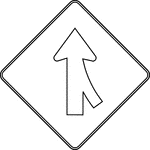
Merge, Outline
A Merge sign may be used to warn road users on the major roadway that merging movements might be encountered…

Merge, Silhouette
A Merge sign may be used to warn road users on the major roadway that merging movements might be encountered…
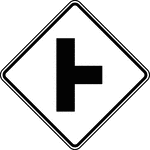
Side Road, Black and White
A Side Road symbol sign may be used in advance of an intersection to indicate the presence of an intersection…
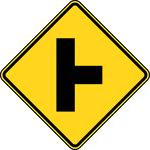
Side Road, Color
A Side Road symbol sign may be used in advance of an intersection to indicate the presence of an intersection…
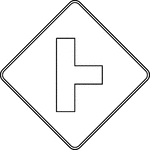
Side Road, Outline
A Side Road symbol sign may be used in advance of an intersection to indicate the presence of an intersection…

Side Road, Silhouette
A Side Road symbol sign may be used in advance of an intersection to indicate the presence of an intersection…

Side Road, Black and White
A Side Road symbol sign may be used in advance of an intersection to indicate the presence of an intersection…
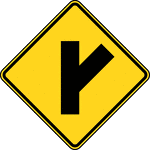
Side Road, Color
A Side Road symbol sign may be used in advance of an intersection to indicate the presence of an intersection…

Side Road, Outline
A Side Road symbol sign may be used in advance of an intersection to indicate the presence of an intersection…

Side Road, Silhouette
A Side Road symbol sign may be used in advance of an intersection to indicate the presence of an intersection…
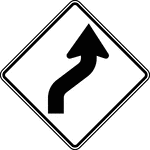
Reverse Curve, Black and White
The horizontal alignment Reverse Curve signs may be used in advance of situations where the horizontal…
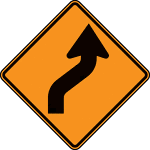
Reverse Curve, Color
The horizontal alignment Reverse Curve signs may be used in advance of situations where the horizontal…
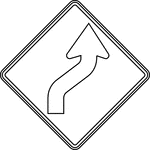
Reverse Curve, Outline
The horizontal alignment Reverse Curve signs may be used in advance of situations where the horizontal…
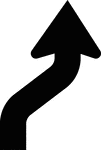
Reverse Curve, Silhouette
The horizontal alignment Reverse Curve signs may be used in advance of situations where the horizontal…

Double Reverse Curve, Black and White
The horizontal alignment Reverse Curve signs may be used in advance of situations where the horizontal…
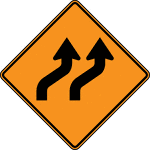
Double Reverse Curve, Color
The horizontal alignment Reverse Curve signs may be used in advance of situations where the horizontal…
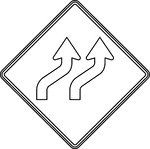
Double Reverse Curve, Outline
The horizontal alignment Reverse Curve signs may be used in advance of situations where the horizontal…

Double Reverse Curve, Silhouette
The horizontal alignment Reverse Curve signs may be used in advance of situations where the horizontal…
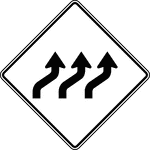
Triple Reverse Curve, Black and White
The horizontal alignment Reverse Curve signs may be used in advance of situations where the horizontal…
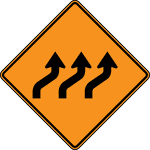
Triple Reverse Curve, Color
The horizontal alignment Reverse Curve signs may be used in advance of situations where the horizontal…
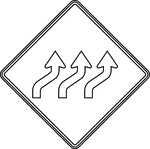
Triple Reverse Curve, Outline
The horizontal alignment Reverse Curve signs may be used in advance of situations where the horizontal…

Triple Reverse Curve, Silhouette
The horizontal alignment Reverse Curve signs may be used in advance of situations where the horizontal…
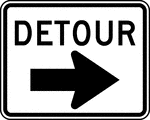
Detour, Black and White
Each detour shall be adequately marked with standard temporary route signs and destination signs. Detour…

Detour, Color
Each detour shall be adequately marked with standard temporary route signs and destination signs. Detour…

Detour, Outline
Each detour shall be adequately marked with standard temporary route signs and destination signs. Detour…

Lion Crest
"The English crest is a crown surmounted by a lion statant guardant crowned, or. CREST. The ornament…
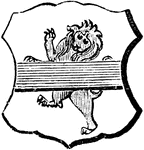
Lion Debruised
"Argent, a lion rampant guardant gules, debruised by a fess azure. DEBRUISED. Any animal that has an…

Paradoxides Harlani
Paradoxides was a genus of relatively large trilobites, extinct marine arthropods, that form the class…
Vorticella
The Bell Animalcule (Vorticella) (fig 10) in certain respects resembles the Slipper Animalcule. It is…
Protozoan
Gregarina, a protozoan, various species which live in the alimentary canal of crayfishes, centipeds,…
Protozoan
Gregarina, a protozoan, various species which live in the alimentary canal of crayfishes, centipeds,…

Protozoan
Gregarina, a protozoan, various species which live in the alimentary canal of crayfishes, centipeds,…

Protozoan
Gregarina, a protozoan, various species which live in the alimentary canal of crayfishes, centipeds,…
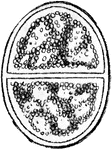
Protozoan
Gregarina, a protozoan, various species which live in the alimentary canal of crayfishes, centipeds,…

Protozoan
Gregarina, a protozoan, various species which live in the alimentary canal of crayfishes, centipeds,…
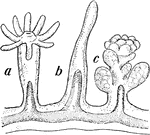
Hydroid Jellyfish
Hydroids, related to the jellyfish, have three basic life-cycle stages: a tiny free-swimming planula…
Flatworm
Flatworms are flattened, leaf-like forms living in damp places on land, in freshwater streams of ponds,…
Flatworm
Flatworms are flattened, leaf-like forms living in damp places on land, in freshwater streams of ponds,…

Flatworm
Flatworms are flattened, leaf-like forms living in damp places on land, in freshwater streams of ponds,…
Flatworm
Flatworms are flattened, leaf-like forms living in damp places on land, in freshwater streams of ponds,…

Flatworm
Flatworms are flattened, leaf-like forms living in damp places on land, in freshwater streams of ponds,…
Marine Worm
Marine worms (Polynoe bevisetosa), a worm with highly developed heads and many bristles arranged along…
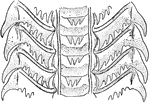
Snail
Many mollusks live upon seaweeds, and the greater number of terrestrial forms are fond of garden vegetables.…
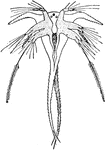
Barnacles
A barnacle is a type of arthropod belonging to infraclass Cirripedia in the subphylum Crustacean, and…

Barnacles
A barnacle is a type of arthropod belonging to infraclass Cirripedia in the subphylum Crustacean, and…

Cockroach
Cockroaches or roaches are insects of the order Blattaria. This name derives from the Latin word for…

Scorpion
Scorpions are any arachnid of the order Scorpionida. Unlike the majority of arachnid species, scorpions…

Metamorphosis of a Mosquito
Mosquitoes are common flying insects in the family Culicidae that are found around the world. Mosquito…
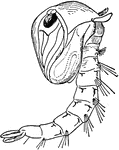
Metamorphosis of a Mosquito
Mosquitoes are common flying insects in the family Culicidae that are found around the world. The pupa…
Honey Bees
Bees are flying insects closely related to wasps and ants. Honey bees (or honeybees) are a subset of…
Carpenter Bee
Carpenter bees are large, hairy bees distributed worldwide. Their name comes from the fact that nearly…
Springfield M1903 Rifle
"U.S. Rifle, CAL .30 M1903 (Springfield)." -War, 1944 The Springfield M1903, formally the United States…

Browning Machine Gun
The Browning M1919 is a .30 caliber medium machine gun family widely used during the 20th century. It…
Bazooka
A bazooka is one of a series ("M9 series" variants) of anti-armor and anti-bunker, man-portable rocket…

105 mm Howitzer M2A1
The 105 mm Howitzer M2A1(M101) was the standard light field howitzer for the United States in World…
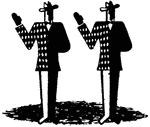
Two Men Taking Oath
An illustration of two men with their left hand behind his back and their right hands up.
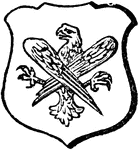
Eagle en Arrière
"Argent, an eagle proper en arrière. EN ARRIÈRE. An expression borrowed from the French,…

Gambe
"GAMBE. An obsolete French word, signifying a leg, and is still used in Heraldry, for the leg of a lion…
